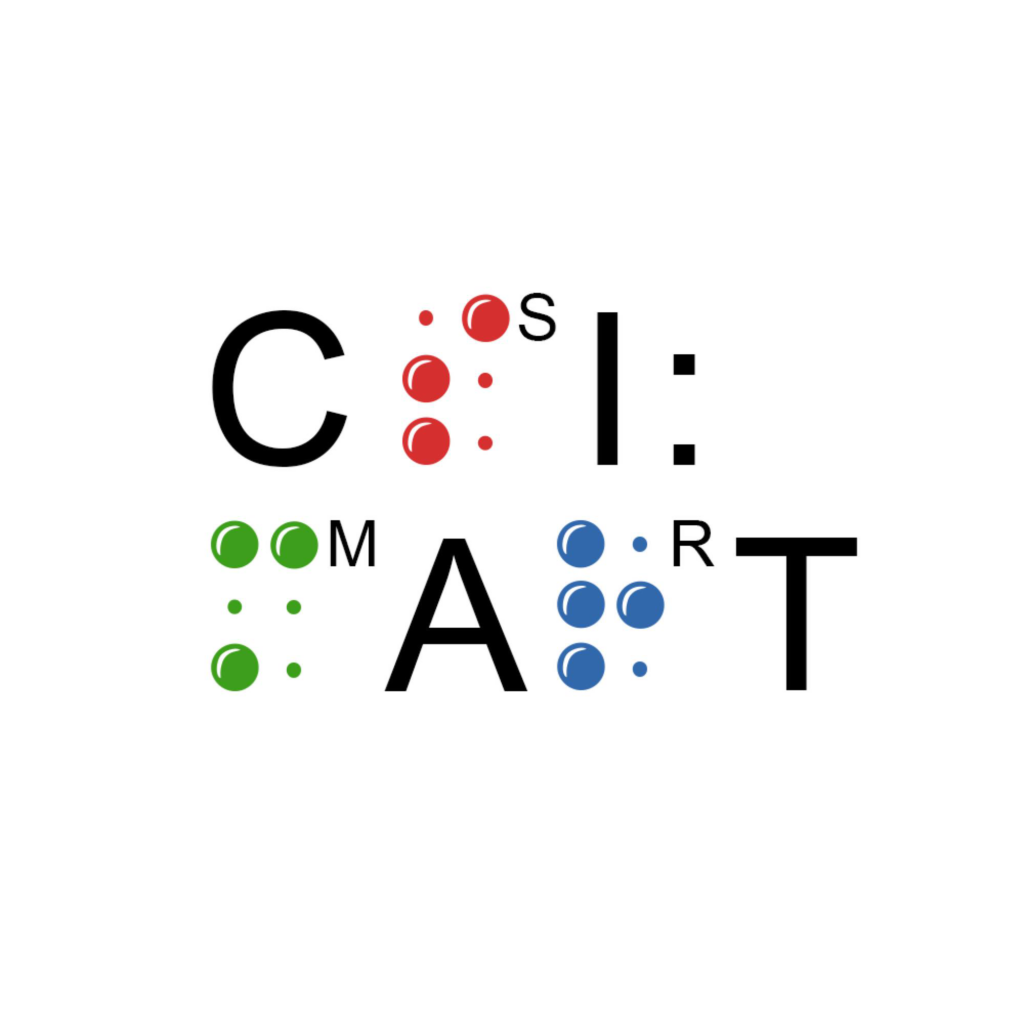About the project

Project Overview
The WHO had estimated that approximately 30 million visually impaired individuals existed in Europe, facing challenges like limited accessibility, societal stigma, and unemployment, leading to feelings of isolation. Research indicated high rates of depression and anxiety among visually impaired youth.
In response to these issues, the CSI:MART project introduced art therapy to promote the well-being of visually impaired individuals. Art therapists believe that creative expression enhances skills, self-knowledge, and self-esteem, reducing stress. Art also imparts problem-solving and critical thinking skills, fostering self-expression and community participation.
The project innovatively combined mindfulness and art therapy, resulting in mindfulness-based art therapy. Mindfulness positively impacted mental health, especially for visually impaired children and youth, focusing on awareness of emotions and physical sensations.
The project was designed with inclusivity at its core, aiming to provide equal opportunities, access, and diversity. Its activities created an inclusive environment for young visually impaired individuals to participate and contribute, with a commitment to making results accessible to a diverse range of participants.
Objectives and Goals
The main aim of this project corresponded to the inclusion and diversity horizontal priority of the Erasmus+ programme. This project aimed to increase quality, innovation and recognition of youth work by combining creativity, arts and culture and promoting inclusion, equality and non discrimination regarding young persons with visual impairments. Through a mutual collaboration between organizations that work with youth with disabilities and an organization that is a provider of quality and innovative youth work methodologies based on mindfulness philosophy we developed a powerful network that answered to the needs of the most disadvantaged youth group – youth with disabilities.
This collaboration resulted in successful achievement of the first objective of the project:
- “Establish and develop transnational cooperation between diverse organizations, exchange knowledge, information and resources in order to contribute to the innovation of youth work for youth with visual impairments.”
The activities of the CSI: MART project, through research on mindfulness and art therapy, inclusion of the best good practice examples in partner countries and by development of a set of meaningful activities resulted with a specially designed methodological guidebook. The guidebook in an e-book and audiobook format presented an innovative youth work approach that combined art therapy and mindfulness philosophy with non-formal learning methodologies. This project’s result provided new opportunities for personal development of young people with visual impairments across the EU.
In this way the project fulfilled the second specific objective of the project:
- “Promote and develop non-formal education methodologies that tackle inclusion, equity, creativity, diversity and innovation in education, training and youth through the use of innovative methodologies such as mindfulness and art therapy specially designed for youth with visual impairments.”
Through a quality implementation of an elaborate set of project activities the partners of this project developed their international collaboration network successfully creating and disseminating innovative youth working tools aimed at youth with disabilities. These project results were tested with the target group and published in 4 languages (partners languages and English). Project results were disseminated to a wide range of stakeholders across the EU, all dedicated to working with young people with visual impairments.
Target audiences and beneficiaries
The direct target groups of this project were organizations and youth practitioners working in the field of non-formal education and the most disadvantaged youth such as: youth with physical disabilities, youth with visual impairments. The project directly involved 6 youth workers/project managers working in the partner organizations. The project results were beneficial for all the partners staff (13 total).
Through the implementation of the CSI:MART project, the organization in charge gained much needed information, skills and competences so that they are now equipped to work with their target groups of youth. Their youth workers learned more about the good practice examples and managed to innovate their youtwork with the sensitive target group. They were given new methodologies and became familiar with innovative approaches so that they can level up their youth working activities in the long run. They were able to use the project results for their own personal benefit, by participating in art therapy activities as participants which turned out to be beneficial for their health and wellbeing, as well as for the improvement of their professional competences.
The indirect target groups of the project were young people in Europe, emphasis on youth from Italy, Croatia and Greece that came from disadvantaged backgrounds, especially youth with disabilities such as visual impairments. Within the project, more than 15 young people with visual impairments and/or physical disabilities participated in the project activities during research phase, pilot testing and multiplier events. Additional 10 young people, without obstacles participated in the project activities, while the project results were disseminated to more than 100 young people through dissemination activities.
These young people were given new, innovative learning and personal development resources that allow them to equally participate in NFE activities with their peers. Mindfulness art therapy, that the project’s results are based on, can be utilized by everyone and it was proven to be beneficial for all, for everyone’s health and wellbeing.
In as much, developed activities are suitable for diverse youth groups, including youth without obstacles to participate in art therapy and mindfulness activities with their peers with disabilities. The wider target groups were all the young people in the partner countries, as well as within the EU that gained opportunities to equally participate in the activities derived from the produced materials. In this way, we promoted and raised awareness on the needs of the most disadvantaged youth.

This project has been funded with support from the European Commission. This publication reflects the views only of the author, and the Commission cannot be held responsible for any use which my be made of the information contained therein. [Project Number: 2021-2-IT03-KA210-YOU-000045090]